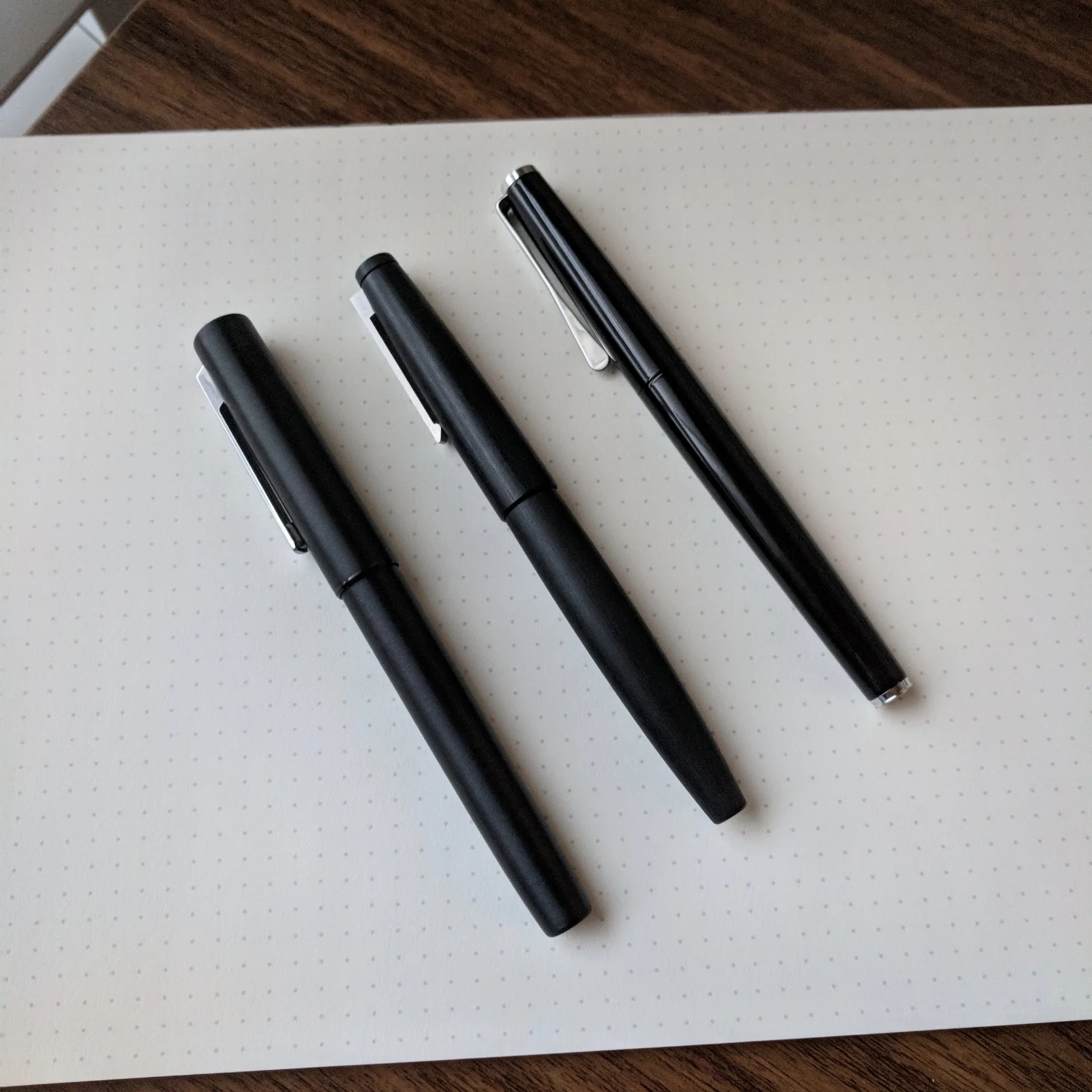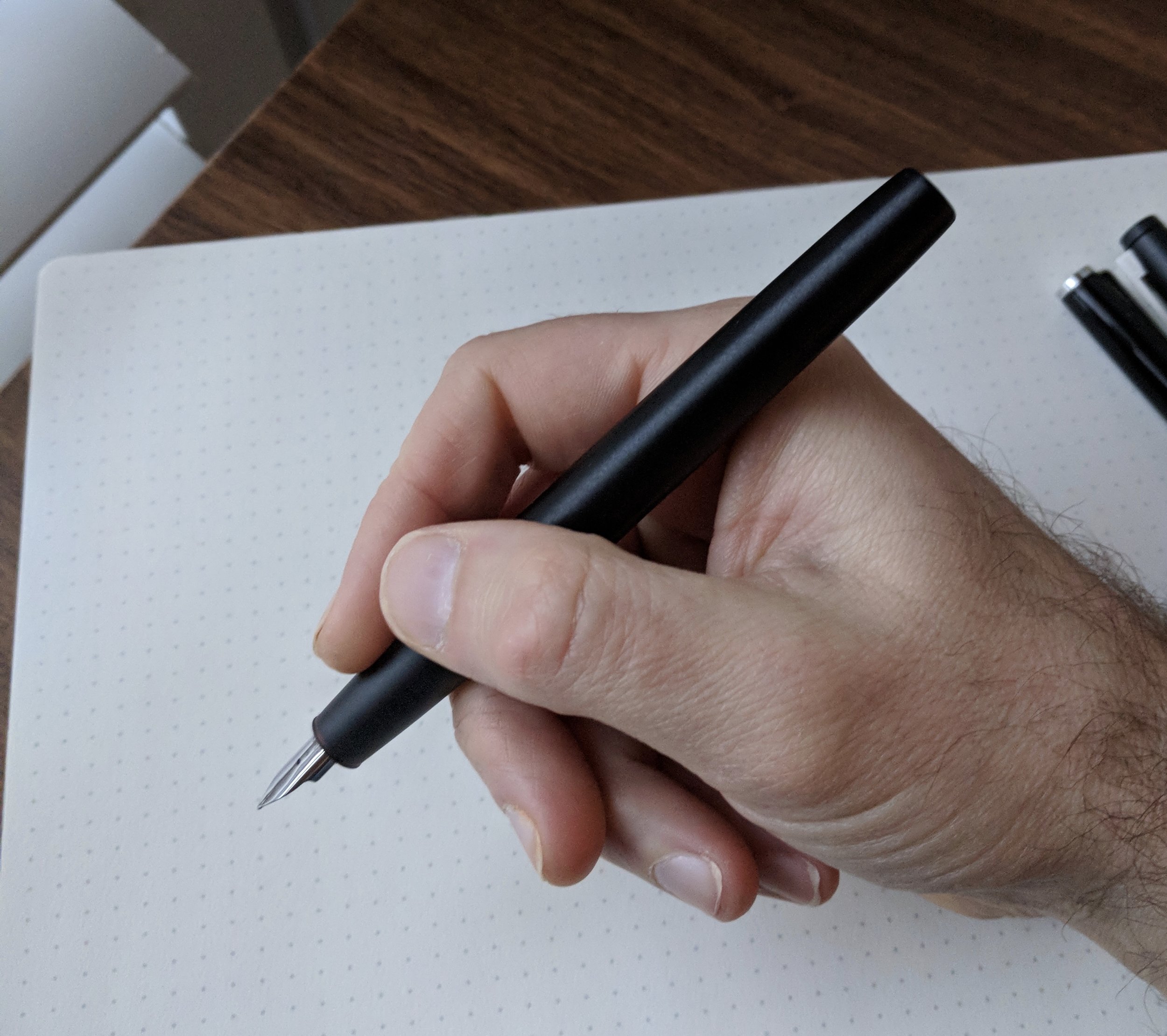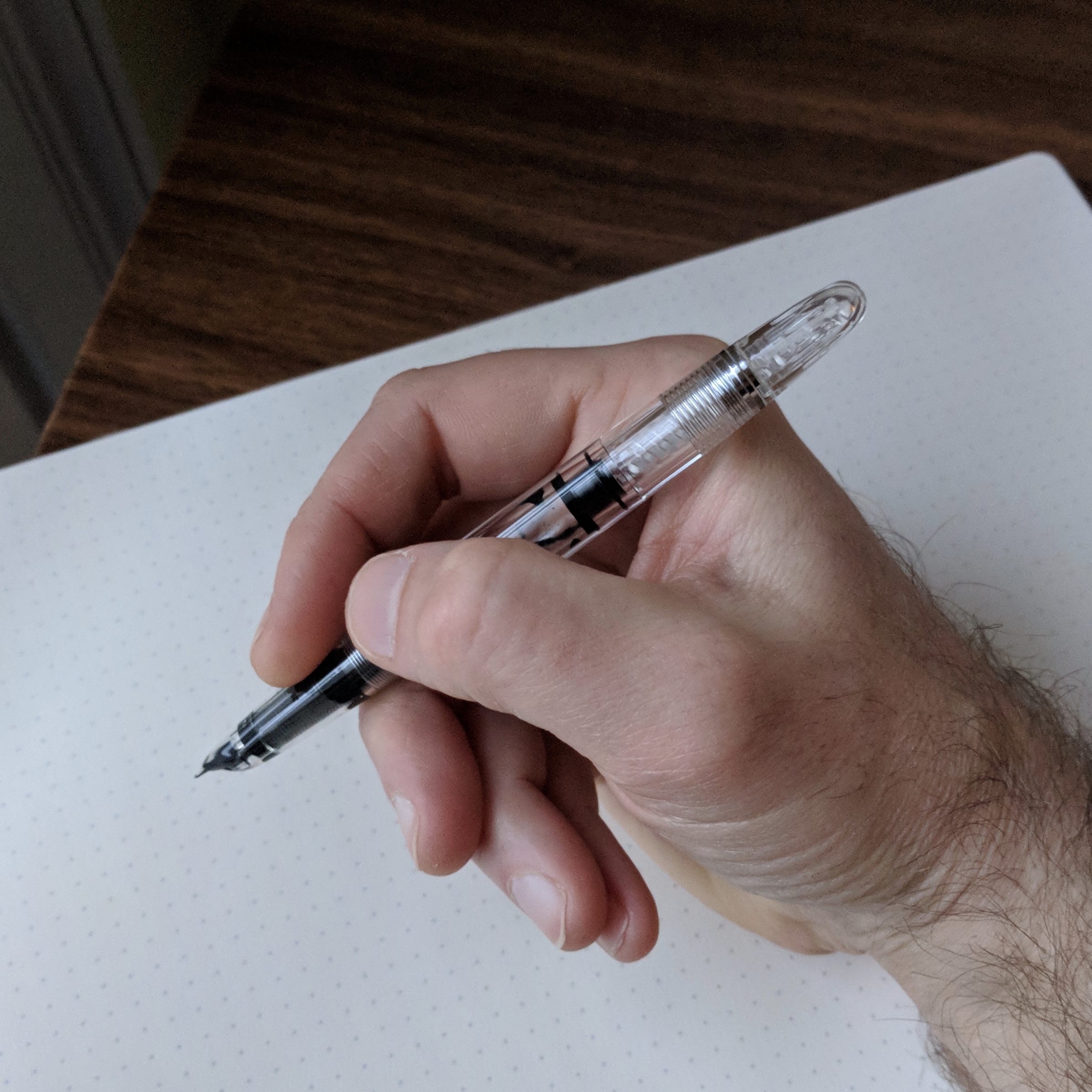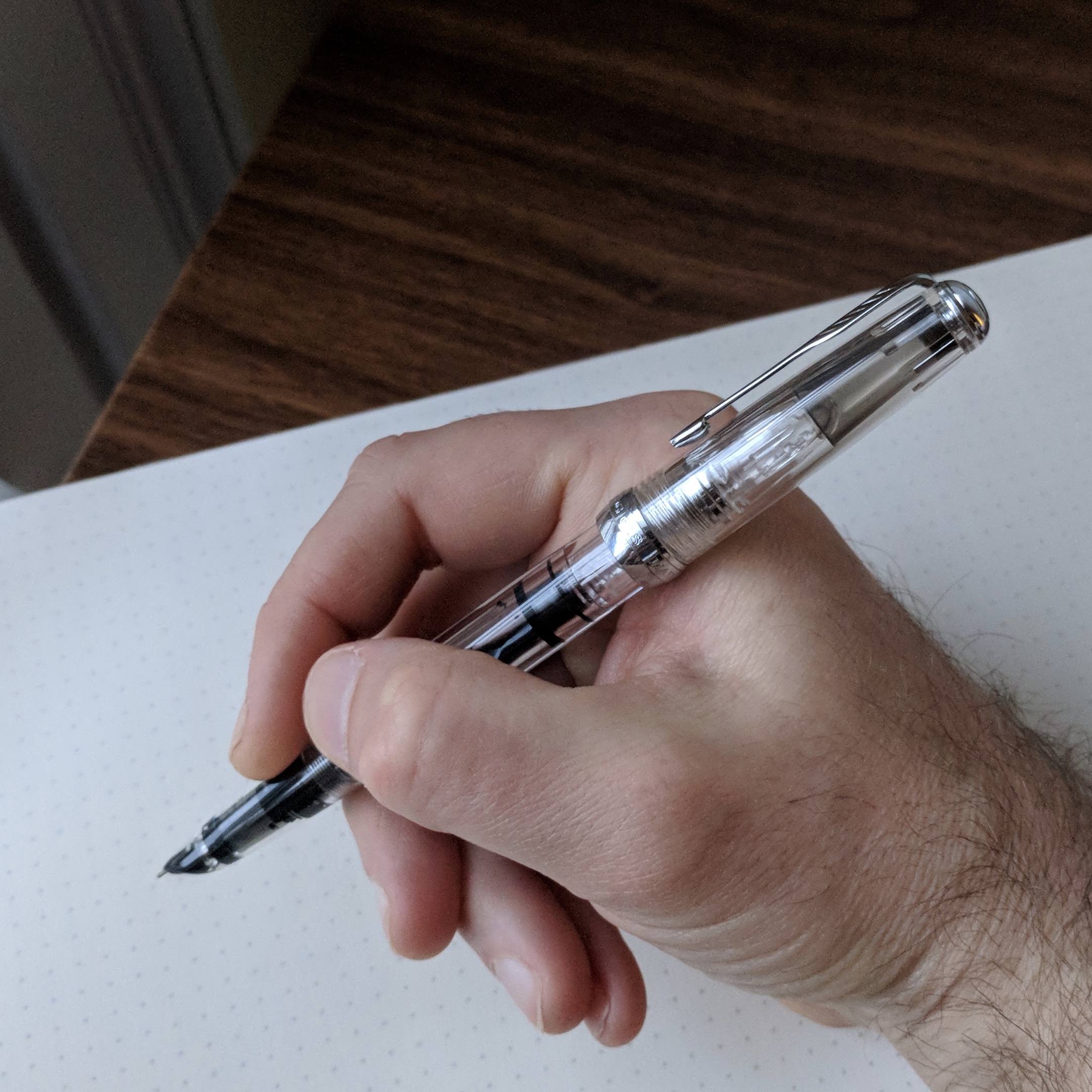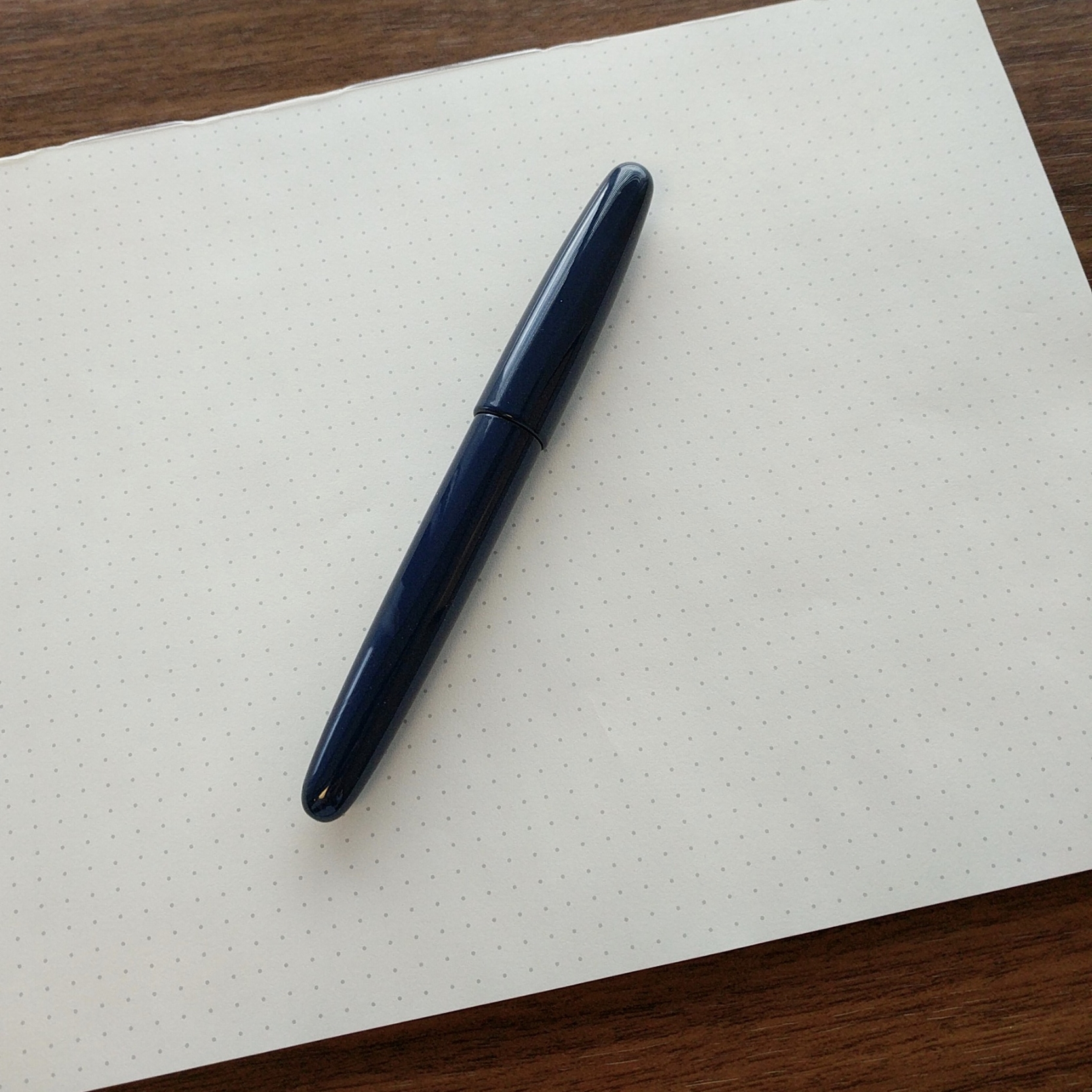Papermate's had it rough the past couple of decades. Among stationery enthusiasts and office supply aficionados, it's seen rival Bic achieve near mythic status while Papermate's offerings mostly remained the stuff of the bargain shelf. While the classic Flair felt-tip pens and the Write Bros. stick ballpoints have their fans, it wasn't until the release of the Inkjoy gel pen a couple of years ago that Papermate started to work its way back into the conversation.
Unfortunately the .5mm "fine" tip inkjoy comes in fewer colors than the .7mm version. (Not all available colors are pictured here.)
The Inkjoy's claimed selling points are bright colors and quick dry time. Both deliver, for the most part. These gel pens are among the most vibrant I've used, and you can purchase multi-packs with over a dozen different colors. Since I primarily use my gel pens on cheaper, more absorbent copy paper at work, dry time has never been a big issue for me, but I can verify that the Inkjoy dries quickly, within seconds. I've not found it "instantaneous," as some marketing seems to claim, but it's very good.
The pink, purple, and green Inkjoy gel pens really pop.
The gel Inkjoy is available in two tip sizes: .7mm and .5mm. The .5mm works just fine, but I'd love to see Papermate introduce a .38mm version. They recently introduced the Flair felt tip pen in an "ultra fine" tip size, so I'm hopeful.
I'd prefer a metal clip. The plastic clip reminds me of those disposable Bic mechanical pencils that I used to use in school where it was a given that the clip would break off within a week.
To me, the most surprising aspects of this pen were the comfort and generally strong build quality. The knock has some nice action to it, extending and retracting with a firm click, and the soft barrel is extremely comfortable. Though I've not really put this theory to the test, it seems like the inkjoy should be more durable than some of the clear plastic gel pens that seem to crack/break long before you actually finish the refill. The plastic clip, however, is a bit of a disappointment.
The Inkjoy has good length and is nicely balanced. It's a comfortable pen to use for longer writing/notetaking sessions, and there's a lot of grip area.
Takeaways and Where to Buy
The inkjoy represents another good gel pen option, especially if you like colors other than black, blue, and red. Papermate pens are widely stocked in office supply stores, big box stores, grocery stores, drug stores, you name it. I almost always purchase mass-market gel pens like these via Amazon. The .5mm "fine" tip pens come in an 8-pack, while you can get a 13-pack of the .7mm "medium" tip pens.
Note: Papermate also sells a ballpoint version of the Inkjoy. It's a completely different pen that has not garnered great reviews, but I recently went ahead and bought a pack "for science," so stay tuned. If you're out shopping the local office supply store looking for the gel version, be aware!
Also, check out this cool timeline over on the Papermate website, showing some of their flagship product lines dating back to the 1940s. I'd forgotten that many of these pens and pencils even existed!
Disclaimer: This post contains affiliate links.


